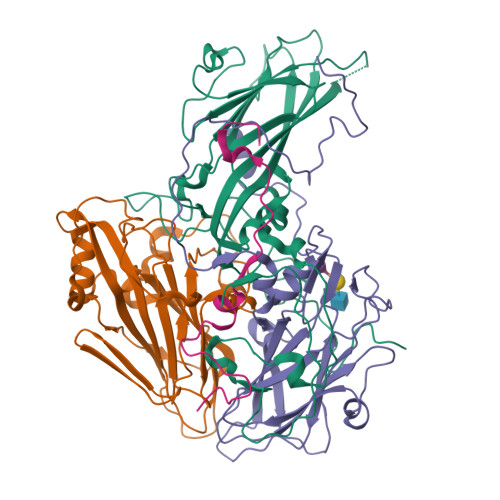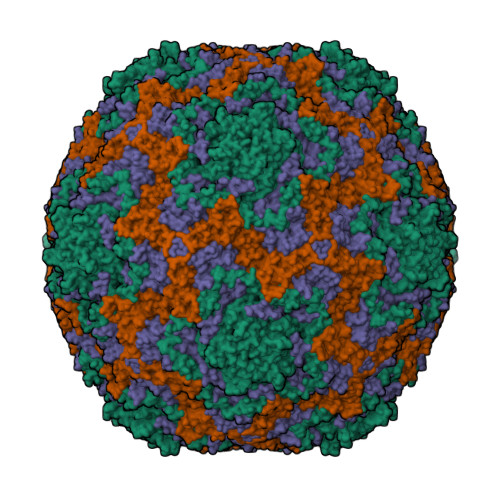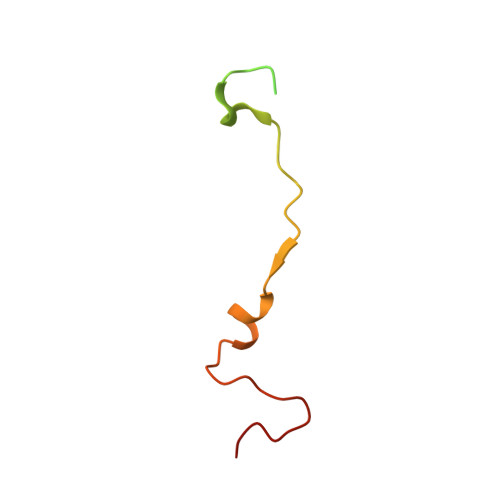Sialic acid-dependent cell entry of human enterovirus D68.
Liu, Y., Sheng, J., Baggen, J., Meng, G., Xiao, C., Thibaut, H.J., van Kuppeveld, F.J., Rossmann, M.G.(2015) Nat Commun 6: 8865-8865
- PubMed: 26563423
- DOI: https://doi.org/10.1038/ncomms9865
- Primary Citation of Related Structures:
5BNN, 5BNO, 5BNP - PubMed Abstract:
Human enterovirus D68 (EV-D68) is a causative agent of childhood respiratory diseases and has now emerged as a global public health threat. Nevertheless, knowledge of the tissue tropism and pathogenesis of EV-D68 has been hindered by a lack of studies on the receptor-mediated EV-D68 entry into host cells. Here we demonstrate that cell surface sialic acid is essential for EV-D68 to bind to and infect susceptible cells. Crystal structures of EV-D68 in complex with sialylated glycan receptor analogues show that they bind into the 'canyon' on the virus surface. The sialic acid receptor induces a cascade of conformational changes in the virus to eject a fatty-acid-like molecule that regulates the stability of the virus. Thus, virus binding to a sialic acid receptor and to immunoglobulin-like receptors used by most other enteroviruses share a conserved mechanism for priming viral uncoating and facilitating cell entry.
Organizational Affiliation:
Department of Biological Sciences, Hockmeyer Hall of Structural Biology, 240 South Martin Jischke Drive, Purdue University, West Lafayette, Indiana 47907, USA.























